Investing in Regenerative Agriculture
These are some of the oldest technologies in the world making a comeback – ancient grazing systems, cultivation strategies, and crops that have been forgotten are seeing new use as we struggle to become a good keystone species on planet Earth.
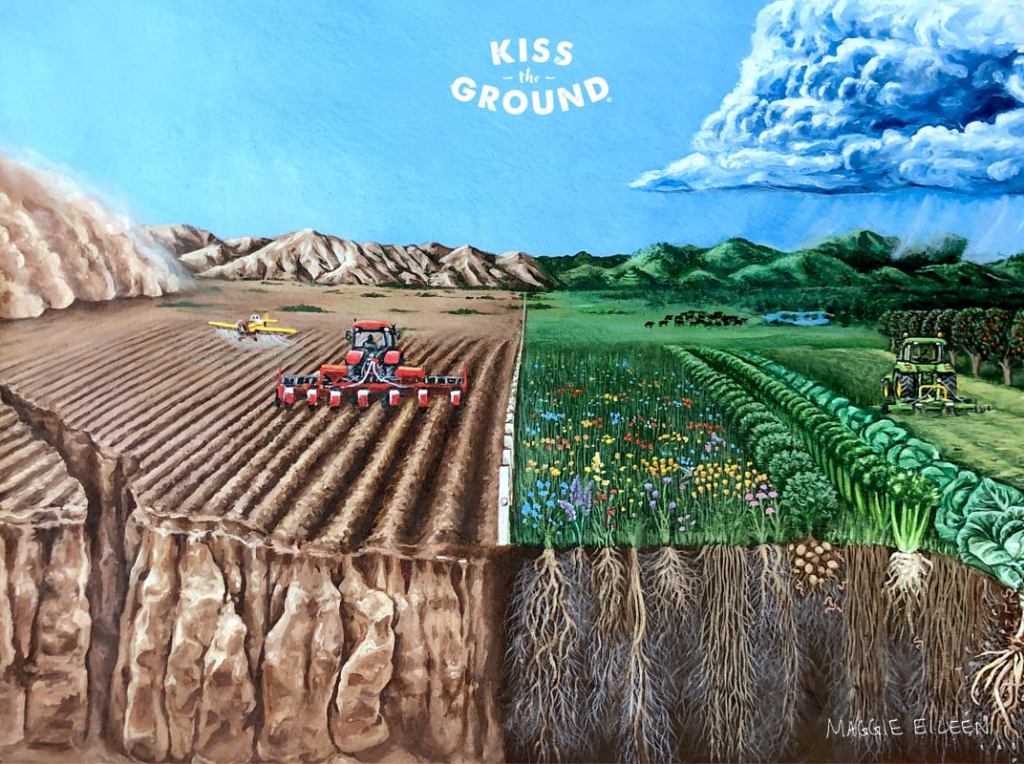
Ecological Technologies
For those who know me, I bet you're thinking “Uhh, regenerative agriculture? I thought you were the robotics guy who’s all about biotechnology and GMOs and stuff?”
Yes, true! I am. From the outside, I can see that my path to regenerative agriculture may look like a classic flip-flop. But I actually see the life-science robotics company Opentrons I co-founded – along with Synthetic Biology more generally – and the Regenerative Agriculture movement as two parts of a broader ecological technology revolution.
This might sound a bit surprising to some, given that we live in a world where the GMO booster and the natural foods crowds are constantly fighting each other. But to me, the GMO vs natural foods debate misses the point. The more important question is: how do we design symbiosis? Do our technologies work to enhance, curate, and re-purpose ecological processes already happening in the biosphere (“natural”)? Or do they create unsustainable reliance on industrial inputs like fossil fuels or chemical fertilizer?
In other words, do our production systems work with ecological systems, or against them?
I define “ecological technologies'' as innovations that enhance, curate, and re-purpose ecological processes already happening in the biosphere to symbiotically achieve a goal for human society. Usually the most effective way to harness these ecological processes is by developing specialized organisms to do the work for you. These can be microbes that take atmospheric carbon and produce a commodity chemical that was previously made with petroleum. Or these could be a hardy hybrid cattle variety that produces high-quality protein in a harsh climate eating only local forage. The “engineering” to create these organisms can happen in a lab, greenhouse, or barn. But, however you get there, the goal is a life form that creates a bounty via symbiosis.
Note, this definition of ecological technology intentionally excludes the vast majority of GMOs currently on the market – things like RoundUp Ready grain – that function to intensify chemical inputs from outside of the local ecology, rather than encourage symbiotic processes within it.
The goal of regenerative agriculture is both simple and exciting: Let's take a system that is killing the planet and replace it with one that generates life! The regenerative agriculture / agro-ecology systems being developed right now are ecological technologies for modern food production. But really, these are some of the oldest technologies in the world making a comeback – ancient grazing systems, cultivation strategies, and crops that have been forgotten are seeing new use as we struggle to become a good keystone species on planet Earth.
This blog post is devoted to explaining how I'm thinking about regenerative agriculture and the investments I've made in amazing teams working on accelerating its growth to include the entire food system.

We Need A Post- "Green Revolution" Food System
The Green Revolution (1955 - 1975) ushered in a complete change in how food is produced. It is also called the Third Agricultural Revolution because it was the third such epochal change, after the Neolithic Revolution (~7500 BCE) and the British Agricultural Revolution (~1700 - 1800 CE). This massive, global, shift "was associated with chemical fertilizers, agrochemicals, and controlled water-supply (usually involving irrigation) and newer methods of cultivation, including mechanization.” (Wikipedia)
In 1973, in a moment that has come to define the Green Revolution, the US Food and Agriculture Secretary Earl Butz told farmers to "get big, or get out." Big tractors, big diesel bills, big fertilizer & herbicide & pesticide sprays, and – most importantly – big yield. At a time when their arch-nemesis the Soviet Union was experiencing failed crops and famine in Ukraine, the US focused its industrial might on increasing the caloric top-line of American farm production, and it hasn't looked back since.
The “industrialization of agriculture” creates a system that relies on global supply chains to provide intensive inputs into intensive production systems. It is a land management system with high cost per acre because of all the industrial inputs used to (hopefully) generate high yield per acre. The inputs of this industrial farming – things we are all familiar with from documentaries about what is wrong with our food system – were innovations of the Green Revolution:
- Huge Diesel Tractors: Mechanization and over-plowing was one of the main causes of the dust-bowl of the 1930s, and the 1960s saw a doubling down on the size and power of land working machines. Epically huge combine harvesters and GPS guided semi-autonomous tractors continue this trend today, and diesel fuel is the top input to produce American food crops.
- Synthetic Fertilizer: Chemical nitrogen and phosphorus became the key to creating fertility in otherwise dead fields. Not only is the production and shipping of huge amounts of fertilizer one of the single largest contributors to climate change, its application poisons the soil biology that – without the chemical input that kills it – would be naturally cycling nutrients and providing fertility.
- Poison Sprays: Insecticides and herbicides - and genetically engineered crops to support their intensive use - are one of the most destructive elements of industrial agriculture. Their use is linked to the insect population crash, cancer in humans, and the appearance of “superweeds,” to name just a few disastrous consequences of yearly application of poisonous sprays to millions of acres of farmland every year.
- Vegan Monocultures: Industrial agriculture moves animals off the land and into concentrated animal feeding operations (CAFOs), while replacing biodiverse ecologies with homogeneous fields. Converting biodiverse land to monocrop plantations, from cotton and sugar cane to corn and soy, is responsible for most of the habitat destruction in history. Whats more, as we’re seeing with the disappearance of crops like the banana, genetically homogeneous crops are extremely susceptible to blights and disease.
- Soil Loss: Heavy plowing (tillage) from massive tractors has contributed to the permanent loss of up to 60% of the topsoil in the Midwest. By many estimates, if we keep losing topsoil at this rate, we only have 40 more harvests left before we have no more soil to grow crops in. Over-tillage is arguably the single most worst ecological impact generated by industrial agriculture's approach to broad-acre crops today.
- Empty Calories: The rise of products like ethanol and high-fructose corn syrup, as well as type two diabetes and inflammatory diseases of all kinds, are the result of an overproduction of calories with low nutritional value. The nutritional value of the corn produced is close to zero since the soil it is grown on is devoid of any nutrients not sprayed on as a chemical, and thus the calories in it are best suited to industrial products rather than food (Twinkies count as industrial products). The downstream health impacts are massive, including profound racial and economic disparities around access to healthy foods.

In short, the “Green Revolution” farming system attempts to control ecological processes with intensive industrial inputs like artificial fertilizer and pesticide. The results have been a huge increase in caloric yield per acre in the short term, at the expense of ecosystems’ ability to support themselves long term, and the deteriorating nutritional value of the food. The resulting ecological crash – the one we are in the middle of right now! – will take down the entire food system if it's not replaced with a more resilient system that works with ecologies to generate the products we need. The Green Revolution needs to give way to a rediscovery of agro-ecology.
Regenerative Agriculture 1.0
My definition of Regenerative Agriculture is based on lots of other people before me: Food production practices that work with ecological systems, not against them. Fundamentally, it's the idea is that "regenerating" local ecological services can replace the heavy inputs required by industrial agricultural practices. Let's look at what that looks like in practice:
- No-Till: Without tilling, you allow the growth of soil mycorrhizae – tiny fungi that provide critical roles for plants' roots to absorb key vitamins and minerals. This means you don't have to spread fertilizer or burn as much tractor fuel, instead letting the biodiversity cycle the nutrients already present on site.
- Beyond Organic: Without pesticide, you allow for a balance between pest and prey insect species and have a controlled, predictable, and minimal crop loss to pests each year. Poison sprays kill everything, pest and predator insects together, and create a boom / bust pest cycle and forever addiction to expensive chemical pesticide application.
- Animals Back on the Land: By mimicking herd patterns seen in the wild and incorporating intentional animal grazing operations onto crop land, you can achieve more than big tractor passes ever could, working the land and fertilizing, while producing nutritious food protein (more on this below).
- Wildlife Allies: Inviting in wildlife in controlled ways, and leveraging the systems they participate in, is one way regen ag also builds “natural” ecosystems. Examples range from including bluebird houses to controlled insect populations, establishing native pollinator habitats, and encouraging dung beetles for worm suppression in ruminants.
- Perennial Crops: Perennial crops yield every year without being replanted. This is in contrast to annuals like corn, soy, wheat, etc that have to be planted at the beginning of the season, and then fully removed at the end. Tree crops, as well as new varieties of grains like Kernza or even perennial wheat, deliver year after year and only need to be planted once.
- Circular Economy: using the waste of one process as the inputs for another is a key aspect to efficient ecosystem management – its how ecosystems themselves evolved to function. Ensuring that the correct organisms and technologies are arranged in a way to close the loop on cycling energy, water, and nutrients on the land is the farmer’s number one job in these systems.

The Economics of Regenerative Agriculture
So, yeah that's all well and good, but what about the economics? In general, these practices mean that the yield of a particular crop – say, corn bushels per acre – will go down in the short term. But, profitability goes up because the decrease in yield is dwarfed by the decrease in costs to produce that yield. Without spreading fertilizers, pesticides, and herbicides, and without extra diesel fuel guzzling tillage passes, farmers' cost per acre goes way down. The farmer’s job is curating biodiversity that thrives in their local ecosystem and contributes into a cohesive symbiotic design with a good yield of useful products.
Despite decreased chemical and fossil fuel inputs, with correct management and species selection, all the fertility and pest control needed is baked into the ecosystem shepherded into existence by the farmer. And if you incorporate some perennial crops like fruit or nut trees, you start realizing even better inputs to outputs ratio (profitability) on every acre, since trees are largely "set and forget" if you choose hardy local varieties. You can think of it as "automating the farmer out of a job" with natural biodiversity, rather than self-driving mega-tractors. And the output of each acre is a highly nutritious, highly diverse cornucopia of food – not a single empty calorie monoculture.
Regen’s Killer App: Pastured Protein
There is a particular advantage in regen ag for protein production – especially the main food proteins in the USA, beef, pork, and poultry (chicken and turkey). Rather than growing monoculture corn and soy crops in one field, and shipping them (using fossil fuel) to a CAFO somewhere else, regen ag puts the animals back on the land. Why grow corn and soy monocultures to feed livestock in CAFOs, when you can graze the livestock on that land in the first place?
Animals and plants evolved together – along with the fungi and microbes – in complete ecosystems. Without animals, ecosystems are not able to properly cycle nutrients, and the other members of the biological communities are not able to function. Putting cattle, pigs, and poultry back on the land their ancestors evolved to live on re-introduces key ecosystem services for the health of the entire local biological community.
What is the number 1 cause of desertification in the world? Over grazing. When cows, sheep, or goats are kept on land without rotation, they over-graze the plants there until eventually none are left, and the once grassland is now a lifeless desert. But, what is the number 2 cause of desertification? Under grazing. Grassland plants need grazing animals for fertilization, seed dispersal, and soil disturbance. When animals are kept off the land, plant communities can’t continue on from generation to generation – grazing from ruminant mammals is as essential to many grassland plants’ lifecycle as pollination from birds or insects is for fruit and nut trees. The key is moving herds of animals in a way that mimics the way analogous wild animals evolved to move across those ecosystems (quoted from my own blog about our home permaculture design):
The classic multi-species rotation starts with the cows getting let into new pasture. This is part of a high-intensity grazing strategy, so the cows would be kept on a small plot of fresh grass for only ~24hrs. Then you let in the goats, who eat all the spiky stuff the cows don't touch, and the sheep, who eat all the bottoms of the grass the cows don't prefer. After those three ruminants have basically mown the grass down to a lawn, you bring in the chickens in a mobile chicken coop. The shorter grass makes it easier to move the coop and lets the chickens easily catch bugs. Plus the 2 - 3 day old cow pies are now full of fly maggots. The chickens can eat the maggots, which provides free chicken feed, while keeping fly pressure down on the cow herd. And their maggot scavenging process spreads the cow manure evenly across the field.
After the ~5 day intensive animal presence, the land is left for at least 45 days (depending on season, location, weather, etc) to recover and make use of all the new amazing nutrient availability provided by the animals in the form of dung and urine. This mimics how natural ecosystems cycle nutrients and makes best use of all available animal forage. As an agriculture practice, multi-species follow grazing lets a farmer replace buying fertilizer and animal feed with a bit of extra animal movement. It also has a reputation for being the fastest way to increase soil carbon levels in agricultural ecosystems.
The resulting protein from pasture raised systems is also chock full of phytonutrients and antioxidants, as well as the “good fats and oils.” It is incredibly nutrient dense, healthy protein – and farms producing in this way have even clocked in carbon negative lifecycle assessments! (see my blog Negative emissions cows?)
My Regen Ag Thesis
To summarize, Regenerative Ag leans on biodiverse ecosystems, rather than the chemical industrial complex, to provide the inputs required for modern agricultural production.
These operations are often more profitable on a per-acre basis than industrial ag farms, since they do not depend on costly off-farm inputs to produce economically viable yields. Rather than a model of using high-inputs to produce a high yield of a single monoculture, regenerative agriculture favors low to no off-farm inputs for moderate yield of nutrient dense and diverse food.
I am looking for new business models, technologies, and products that unlock the potential of regenerative agriculture to scale to be a majority of our food system. That means they have to not only be ecologically sound, they also need to increase farmer's profitability. I'm looking for companies that help farmers save on ecological inputs like water and fertilizer, introduce new native biodiversity onto the land, or turn a waste stream into a value stream. Or, as you’ll see, some of the investments I've made are in firms with clever financial strategies for bringing massive amounts of capital to bear in transitioning American agricultural land to regenerative farms ASAP.
I am looking for “Impact Investments that pass the Mr. Burns Test” (shoutout to my friends at Fifty Years Ventures for pioneering this model). Basically, the companies have to have a strong business model that even the most profit hungry capitalist (aka Mr. Burns from The Simpsons) would love, while also fulfilling goals of ecosystem regeneration and healthy food production. To me, this venn diagram of ecologically sound practice with a profitable business model is the magic combo that makes a good idea scalable to massive positive change in today’s historical reality.
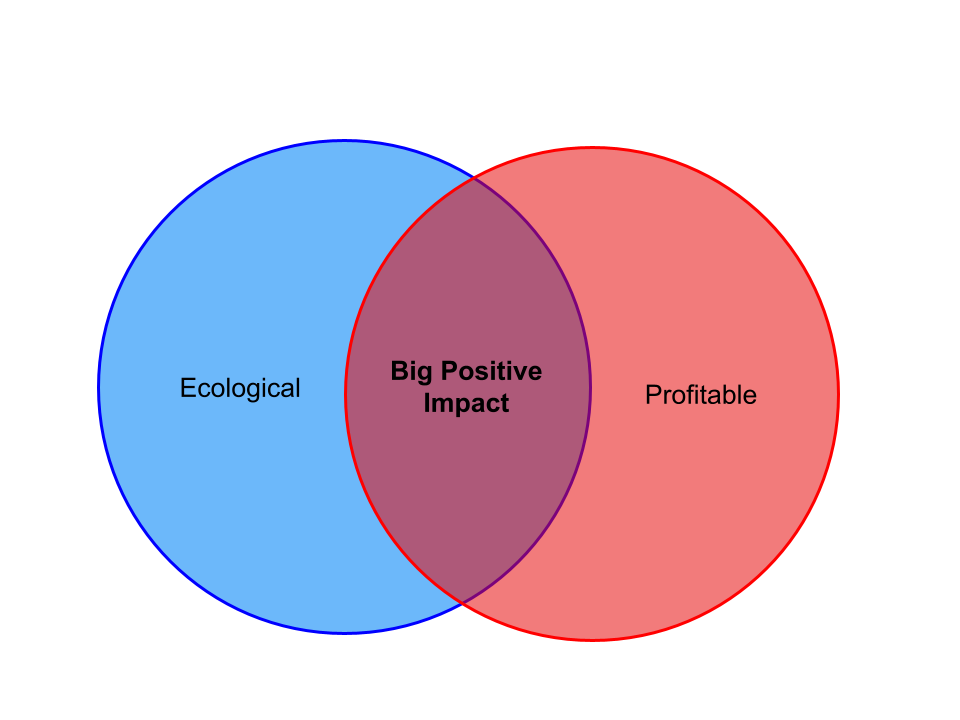
I am making three types of investments:
First, direct into company investments at the earliest stage possible. I love working closely with founders at the very beginning, since I’ve been through my own startup and have hard-earned lessons to share about the big questions confronting early stage companies.
Second, I’m putting money into other people’s funds and financial services companies. Because this is fundamentally about land use – aka real estate – many of the most profitable and powerful investments in the space look more like private equity or real-estate development business models, rather than tech venture capital. Because of that, I’m also placing investments in financial services companies and funds that themselves invest directly in farm land and farmers at massive scale.
Third, I am investing directly into farms and land as a real estate developer. More on this in a later post.
The below are just investments I’ve made in the last six months, and I am excited to keep on going. If you think your company fits in, please email hello@rollingregenerative.com!
CODA Farm Tech (FarmHQ)
Easy Internet of Things upgrade for massive farm water savings.

CODA farm tech is the combination of Connor (CO) and David (DA) Wallace, brothers who grew up as the 4th generation on their family’s potato farm in Bo, Washington. David, CEO, is a former Amazon AI engineer, and PhD chemist from Johns Hopkins, as well as a good friend of mine from college. FarmHQ is a simple retrofit for farmer’s already existing irrigation technology that saves farmers, on average in their BETA test, $1200 in crop loss and 40,000 gallons of water loss, per device, every season. It is a simple IoT upgrade for legacy equipment that makes already existing infrastructure much more efficient and controlled via phone app (think Nest for broad acre irrigation). Farming is responsible for most freshwater use, and most freshwater wastage in the USA – and FarmHQ can prevent lots of that waste and over-use, without breaking the bank for farms. Efficiency upgrades that improve farmer’s lives, lower ecological stressors, and generate great cashflow are what we’re all about!
Poas Bioenergy
Carbon neutral energy for the world.
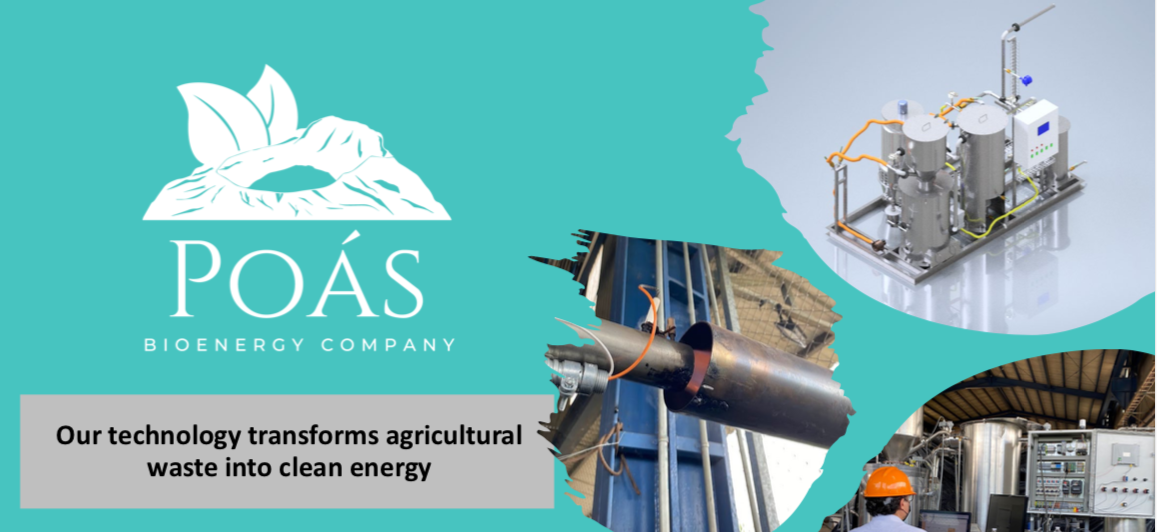
Poas makes technology that turns waste agricultural biomass into clean energy, right in the communities that need it most. I first met CEO Jose Alfaro, PhD, when he was a professor at University of Michigan, where he first developed the gasification unit he is now busy scaling up and deploying in his native country, Costa Rica. Using Poas’ technology, waste streams can be converted into carbon-neutral electricity and used locally – no more waiting for an extension of the central grid that will never come, or burning dirty fossil fuels to power generators for the 770 million people still without reliable electrical infrastructure in the world. The Poas gasifier takes coffee hulls, plantain peels, pineapple stems, – virtually any ag biomass waste stream – and converts it into a high-energy gas that goes directly into a traditional gas generator to produce electricity. A simple retrofit to the gas generator’s carburetor means the biogas can be pumped right in from the Poas gasifier and run the generator at ~75% power compared to fossil fuel. The other main output, besides the syngas, is biochar, and their process manages to output significant energy while “sequestering” ~15% of the input carbon from the feedstock biomass. They already have three big beta customers for their pilot units (I’ve visited two of them) and a strong manufacturing partner in Costa Rica, from which they can scale to all of Latin America and beyond. Valorizing agricultural “waste” to provide clean energy where it is needed most, with a TAM of hundreds of millions of people – I’m super excited to be part of this one!
SoilWorks
Soil-to-shelves regenerative beef portfolio.

SoilWorks is managing a full-stack regenerative grazing portfolio. I’ve written about them before in my Negative Emissions Cows post. They have significant investments in every part of the pastured beef ecosystem, from herd management technology to an on-shelves brand, Wholesome Meats, and everything in between. Their Grassroots Carbon business is also one of the only soil carbon marketplaces I’ve seen to actually live up to the promises of soil carbon credits. They are measuring soil carbon – not just paying farmers to change their practices – so this theirs is a validated form of carbon storage, not just a best guestimate. They’re also paying ranchers a meaningful chunk of the carbon payments, enough to change the economics of ranching. It will take a whole portfolio of investments across the regen beef value chain to change the economics of ranching, making regenerative beef the most profitable way to ranch. SoilWorks is providing the catalytic capital to transition land to regenerative practices across all American grassland, starting in the heart of beef country: Texas. This is good news for healthy, ecological protein production, and I’m excited to be part of their journey!
Belltown Farms
Making grain farms certified organic and ecologically sound.
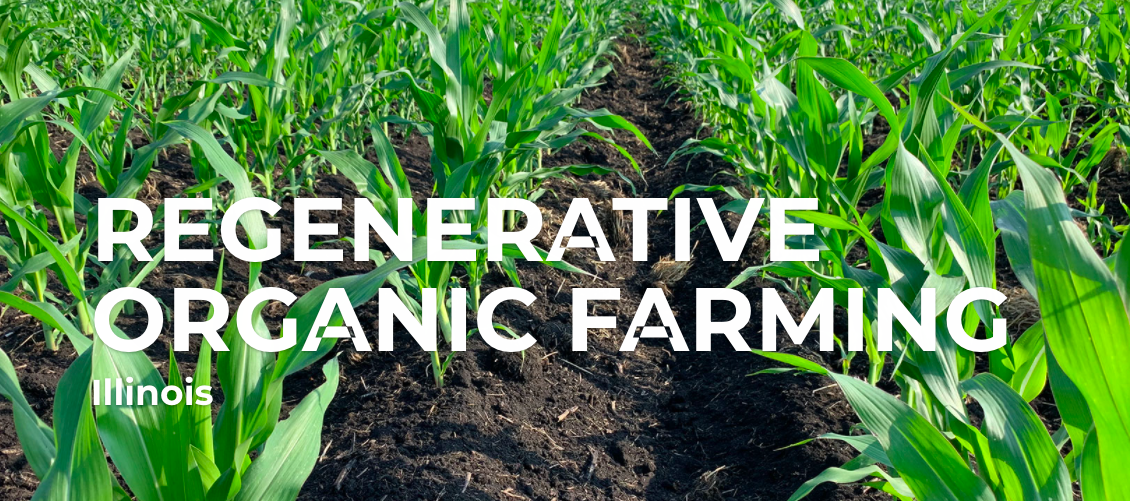
Belltown buys ecologically distressed and under-utilized farmland and converts it to certified organic farmland incorporating regenerative practices. They are tractor farmers growing monocropped grains, but, without this type of farming, the current food system would totally collapse to disastrous effect. So while it isn’t necessarily the full-on agro-ecology move dreamt of in permaculture books, Belltown represents a highly scalable, significant step forward in grain crop production relative to the status quo. They focus on minimizing tillage, eliminating almost all chemical sprays, and working in significant cover-cropping and diverse grain rotations. This eliminates many of the industrial inputs in favor of ecological services provided by local biodiversity. And, with the Certified Organic classification, the price their grain can command on the market is significantly higher than the farms they’re buying the land from. Their proven, scalable farm operations model combined with well financed land purchases via public real estate capital markets makes Belltown an investment that really gives me hope in the near-term likelihood of saving large amounts of American farmland from total ecological collapse.
RePlant Capital
Creating the regenerative supply chain consumers demand through transition finance.
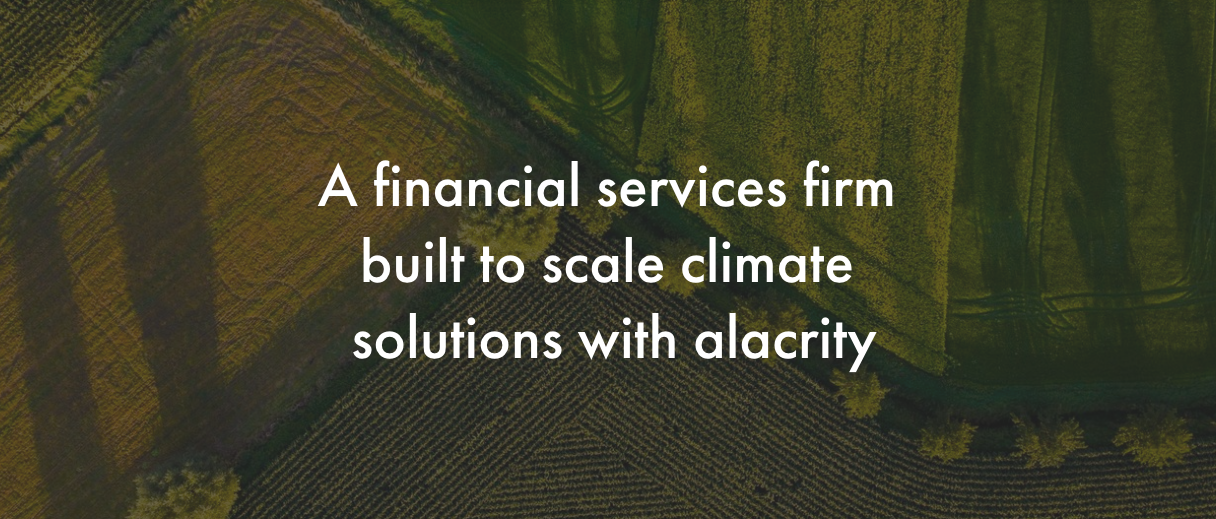
RePlant provides transition finance loans to big producers whose main customer – usually a global consumer brand like General Mills or Silk Soy / Almond Milk – wants to transition their supply chain to regenerative agriculture. They strike the amazing combo of in-tune with the wants and needs of big brands, while knowing how to effectively deploy low- and no-interest loans to farmers transitioning from industrial to regenerative agriculture. To me, they represent exactly the type of financial services company needed to catalyze the growing consumer demand for regen ag products into actually scaled up regen ag supply chains. Similar to Belltown, this is really putting capital to work delivering something the market wants right now – which is ecologically sound almonds, or wheat, or grapes, etc. As the public becomes more concerned with food system security and healthy eating, and that interest is channeled into market pressure on big brands to transition their supply chain to organic and regenerative farms, RePlant will be positioned to deploy much of the transition capital required to make that happen on farms across the country.
MetalPlant
Carbon removal, hydroponics, and phytomining for EV batteries.
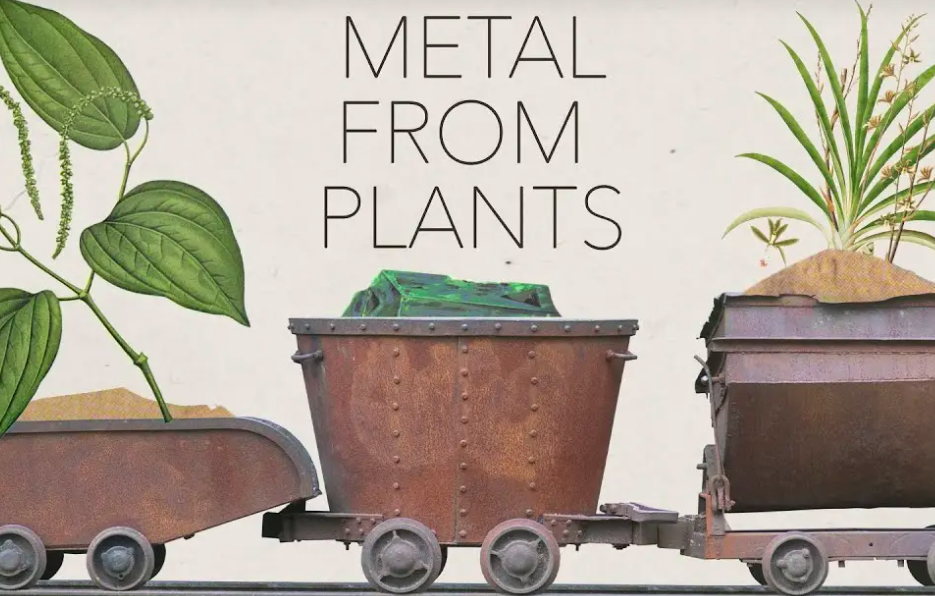
This one is pretty wild, and is a bit outside of the central regen ag thesis, but I love it. It came via the AirMiners Launch Pad program, and I’ve been around AirMiners for years talking with Tito and others there about CO2 removal – very excited they’ve started investing! The Metal Plants business is a clean-tech double-whammy. The first revenue stream is generating carbon credits through CO2 mineralization. They take olivine from mine waste streams and remove the heavy metals so it is safe for ecosystems. Then they scatter it across the land to expose it to the atmosphere, where it will pull out CO2 and turn it into calcium carbonate, aka limestone. Stripe and other big carbon removal buyers are paying a premium for CO2 mineralization because of its “durability,” so this is a clear market opportunity. The second revenue stream is phytomining for nickel, a critical component of electric vehicle batteries. They use hydroponic systems to grow nickel accumulating plants using the mine waste as the growth substrate. The plants pull nickel out of the mine-waste and into their biomass, where it can easily be harvested – while cleaning up the nickel from the olivine for the first business model. The nickel in the plants can be easily harvested and sold on the commodity nickel market, which is growing like crazy with the need for batteries. The hydroponic system means the process can be done even in low-rainfall areas (where some of the best olivine deposits are) because it recycles water in intensive cultivation, and allows for continuous cultivation rather than one growing season per year. To summarize, Metal Plants is doing a double valorization of waste streams using plants and ag tech to feed two important and growing climate commodity markets – batteries and carbon removal. So crazy, I had to be part of this one!
That is my current portfolio, but I am actively considering more investments, and welcome pitches! Contact hello@rollingregenerative.com and we’ll set up a call.
